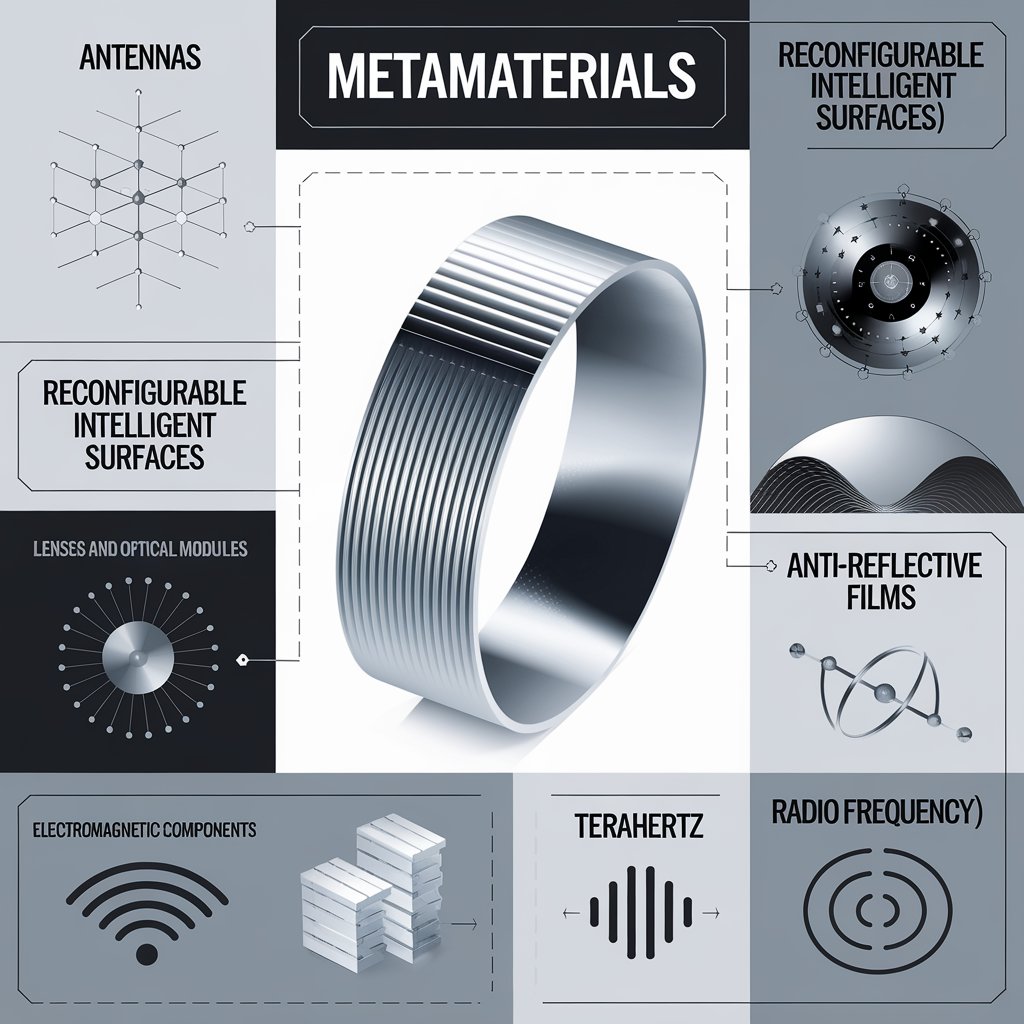The metamaterial market is projected to reach USD 1.38 billion by 2029 from USD 0.22 billion in 2024 at a CAGR of 44.8% during the forecast period. Increasing use of metalens cameras in applications such as smartphones, laptops, and automotive and rising demand for advanced communication networks such as 5G and beyond and are the major factors contributing to the market growth.
The high demand for new advanced materials to address innovations within different fields such as telecommunications, healthcare, and aerospace & defense catalyzes the demand for metamaterials. The need for better performance in wireless communication systems, mainly due to the beginning of 5G and future generations, drives the demand for metamaterial-based antennas and reconfigurable intelligent surfaces (RIS). These metamaterials are transforming healthcare applications such as imaging technologies like superlenses, which offer higher resolutions and diagnoses with more accuracy than ever. In the defense sector, their study is leading to acoustic and electromagnetic cloaking. Urban areas and industries are witnessing an increase in acoustic metamaterials that involve sound insulation and control in order to solve the needs of noise reduction. Scalability and consistency issues and compliance with regulatory standards are more or less evident, but the greater investments in the research aspect and its possible applications in new industries that stimulate market innovation and accordingly the adoption of metamaterial technologies among various industries.
Download PDF Brochure @ https://www.marketsandmarkets.com/pdfdownloadNew.asp?id=139795737

The segments of the metamaterial market based on products include antenna, radar, and reconfigurable intelligent surfaces (RIS); lenses and optical modules; sensors and beam steering modules, anti-reflective films, and others. The application segment mainly includes RF and optical. The end use segment includes consumer electronics, automotive, photovoltaics, robotics, aerospace & defense, healthcare, and telecommunication. The type segment includes electromagnetic, thermal, acoustic, elastic, and others. Each of these segments requires precise metamaterials against performance standards and regulations.
During the forecast period, automotive sector is likely to capture the highest market share due to the increased use of advanced materials for several automotive applications. The material is witnessing a growing level of usage in automotive for enhancing antenna performance, radar systems and sensor technologies being used in advanced driver assistance systems (ADAS), besides enhancing energy efficiency and reducing electromagnetic interference (EMI). Major manufacturing processes for automotive metamaterials are precision patterning, deposition, and integration into electronic systems. These are necessary technologies that underpin next-generation communications systems, including 5G and Vehicle to Everything (V2X), making huge requirements for metamaterials in vehicle components based on the need for a lightweight material with superior strength. Another factor is the increasing use of acoustic metamaterials to reduce noise. Further growth in the automotive sector is therefore fueled by the increasing demand for electric vehicles, for which metamaterials increase battery efficiency and serve as an important power transfer tool via wireless charging, thus translating into higher adoption in that fast-growing market.
Sensors and beam steering modules are expected to register the highest CAGR in the metamaterial market. This is mainly because these modules are very crucial to the applications of ADAS in automobiles, telecommunications, and aerospace defense. New types of beam steering metamaterials with no moving parts are being increasingly used in LiDAR systems for autonomous vehicles and satellite communication technologies to manipulate electromagnetic waves. Elevated sensitivity and performance in medical diagnostics and environmental monitoring are offered by metamaterial sensors. Techniques such as photolithography and advanced depositions would be used in the manufacturing of these products, responsible for precise small-scale patterns to effect optimized control over waves. The major drivers in sensors and beam steering modules’ elevated demand include emerging 5G networks and advancing autonomous driving technologies as well as aerospace systems seeking higher precision and efficiency in higher-performance compact sensors and beam steering modules.
The key players in the metamaterial market Kymeta Corporation (US), Pivotal Commware (US), Echodyne Corp. (US), ALCAN Systems GmbH i.L. (Germany), Metalenz, Inc. (US), Greenerwave (France), Edgehog (Canada), Metamagnetics (US), Fractal Antenna Systems, Inc. (US), Lumotive (US), and TeraView Limited (UK). These players have adopted various organic and inorganic growth strategies such as product launches and expansions, partnerships, collaborations, acquisitions, contracts, and agreements to expand their presence globally and increase their share in the metamaterial market.

